SACRED SITES OF CHACO


SACRED SITES OVERVIEW
There is the “Chaco” that most visitors will see – the one park Rangers will tell them about. And then there is the “Chaco” beyond that veil. The one we will introduce you to.
The Canyon has a 9-mile paved loop road with some excavated sites to visit. On the bluffs there are additional sites we will explore. Just outside of the official “park” there are outlier sites we may visit.
The loop is anchored by the visitor center at one end. Here they offer an interesting interpretive center, a bathroom with hot / cold water, great information, some souvenirs and a theater with films explaining the history of Chaco. This is also where we will get our back country passes for longer hikes.
THE SITES IN THE CANYON

UNA VIDA
A small site located by the visitor center – we will watch the sunset on our first evening from here – with a brief introduction to the masonry of the Chacoans and the clues they left us. According to tree rings taken from trees found at the site, its construction began around 800 AD, at the same time as Pueblo Bonito, and it is one of the three earliest Chacoan Ancestral Puebloan great houses.
HUNGO PAVI
Hungo Pavi measured 872 feet in circumference. Initial explorations revealed 72 ground-level rooms with structures reaching four stories in height. One large circular kiva has been found – though this is not totally excavated.
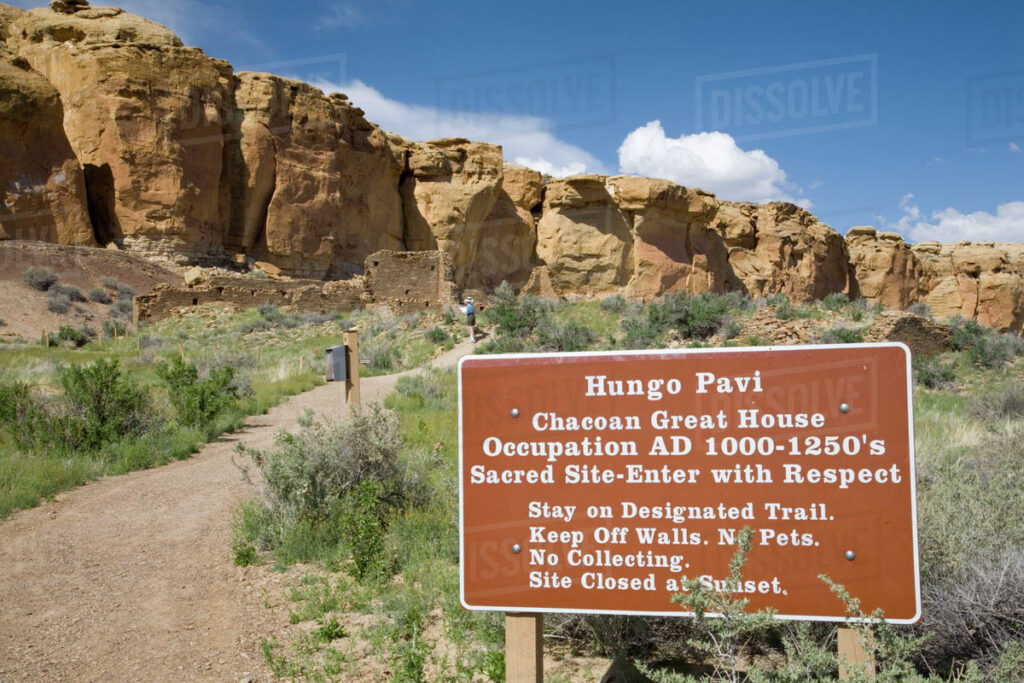
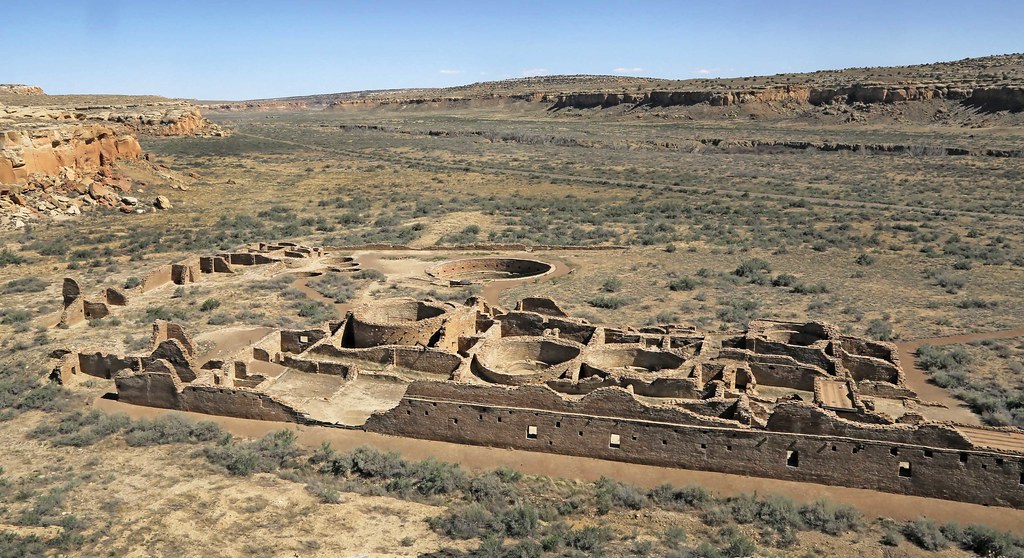
CHETRO KETL
Construction on Chetro Ketl began c. 990 and was largely complete by 1075, with significant remodeling occurring in the early and mid-1110s – so it was a highly dynamic site. Chaco scholars estimate that it required more than 500,000 man-hours, 26,000 trees, and 50 million sandstone blocks to erect. The great house is a D-shaped structure; its east wall is 280 feet and the north wall is more than 450 feet; the perimeter is 1,540 feet and the diameter of the great kiva is 62.5 feet). Chetro Ketl contained approximately 400 rooms covering nearly 3 acres. Archeologists theorize that the area may be an ancestral sacred zone. Chetro Ketl contains architectural elements, such as a colonnade and tower kiva, that appear to reflect a Mesoamerican influence.
Chetro Ketl’s purpose is widely debated but many archeologists believe the building was a place of large-scale ceremonial space that held an important position within the larger Chacoan system.
PUEBLO BONITO
Pueblo Bonito is the largest and best-known great house in Chaco. It was built by the Ancestral Puebloans who occupied the structure between AD 828 and 1126.
Planned and constructed in stages between AD 850 to AD 1150 this is theorized to be the center of the Chacoan world.
In January 1941, a section of the canyon wall known as Threatening Rock, or tse biyaa anii’ahi (leaning rock gap) in Navajo, collapsed as a result of a rock fall, destroying some of the structure’s rear wall and a number of rooms. The builders of Pueblo Bonito appear to have been well aware of this threat, but chose to build beneath the fractured stone anyway. The wall stood 97 feet (30 m) high and weighed approximately 30,000 tons; the Puebloans compensated by building structural reinforcements for the slab.
In 2009, traces of Mexican cacao from at least 1,200 miles away were detected in pottery sherds at Pueblo Bonito. This was the first demonstration that the substance, important in rituals, had been brought into the area before the Spanish arrived around 1500. Cylindrical pottery jars, common in Central America, had previously been found there, but are rare. 111 jars have been found in Pueblo Bonito’s 800 or so rooms.
Pueblo Bonito is divided into two sections by a precisely aligned wall which runs north to south through the central plaza. A Great Kiva is situated on either side of the wall, creating a symmetrical pattern common to many of the Great Houses. In addition to the Great Kivas, over thirty other kivas or ceremonial structures are also there. Interior living spaces were quite large by the standards of the Ancient Pueblo.
The site covers 3 acres and incorporates approximately 800 rooms. In parts of the village, the tiered structure was four and five stories high. During later construction, some lower level rooms were filled with debris to better support the weight of the upper levels. The builder’s use of core-and-veneer architecture and multi-story construction produced massive masonry walls as much as 3 feet thick.

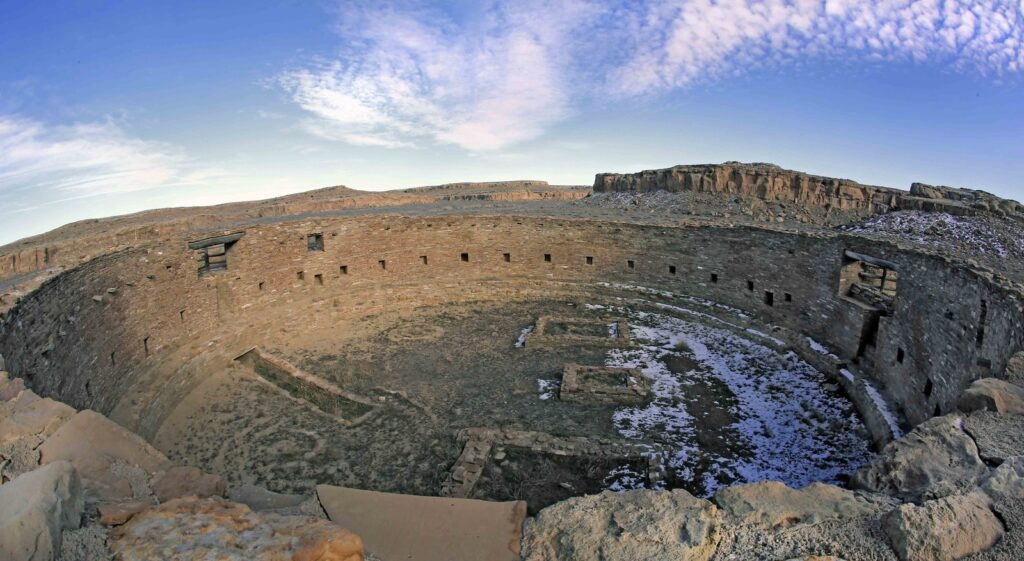
CASA RINCONADA
Casa Rinconada is an isolated great kiva (out of four in Chaco Canyon) with all the typical elements of great kivas: a masonry firebox, an inner bench, four roof-supporting large seating pits, masonry vaults, and 34 niches, divided into two sizes, encircling the kiva. There is also an unusual 39 foot long underground passage, perhaps used in the ceremonies. It was dug out of the sandstone and shale that compose the ridge on which the kiva sits.
With a diameter of 64 feet (20 m), Casa Rinconada is the largest great kiva in Chaco Canyon. It has a powerful vibration and special significance.
PUEBLO DEL ARROYO
The construction of Pueblo del Arroyo, located a few hundred yards from Pueblo Bonito, near Chaco Wash, began c. 1060 AD and continued for approximately thirty years. With three hundred rooms, it is the fourth largest great house in Chaco Canyon. Whereas the other great houses in the canyon are located near the north wall and face south, Pueblo del Arroyo was built in the middle of the canyon facing east. The structure is located opposite South Gap. There are fourteen kivas at Pueblo del Arroyo, but no great kiva has been found at the site.

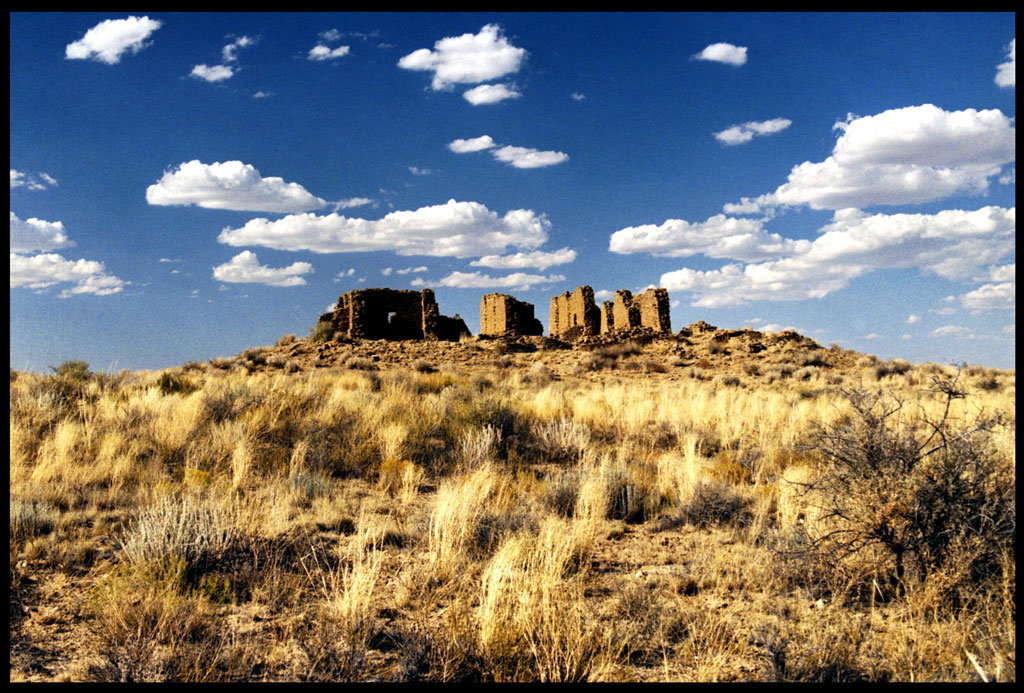
PUEBLO ALTO
An exciting and fun filled hike leads us up to Pueblo Alto – looking over the valley and the views to forever. The complex, comprising 89 rooms in a single-story layout, is located on a mesa top near the middle of Chaco Canyon; 0.6 miles from Pueblo Bonito. It was begun between AD 1020 and 1050. Its location made the community visible to most of the inhabitants of the San Juan Basin. It shares its mesa with another great house, Nuevo Alto. Storerooms at Pueblo Alto opened to the outside rather than into the interior rooms and there was a huge midden of pottery.
PENASCO BLANCO
Located at the end of a beautiful long hike – atop a bluff with views forever. The pueblo consists of an arc-shaped room block, part of an oval enclosing a plaza and great kiva, along with two great kivas outside the great house. The pueblo was built atop the canyon’s southern rim to the northwest of the great houses in the main section of the canyon. The building was constructed in five distinct stages between AD 900 and 1125.
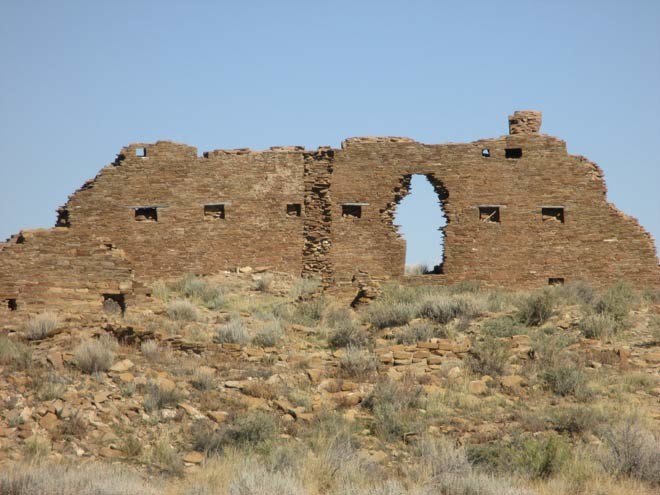
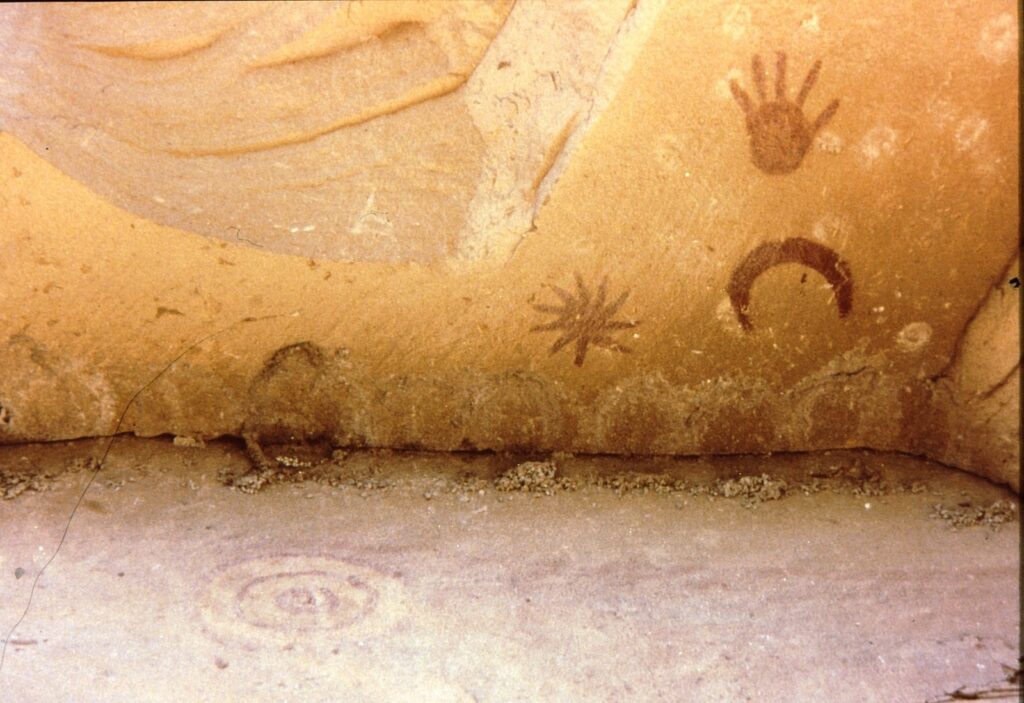
SUPERNOVA PICTOGRAPH
On the hike to Penasco Blanco – you will pass a cliff painting (the “Supernova Pictograph”) nearby may record the sighting of a supernova on July 5, 1054 AD